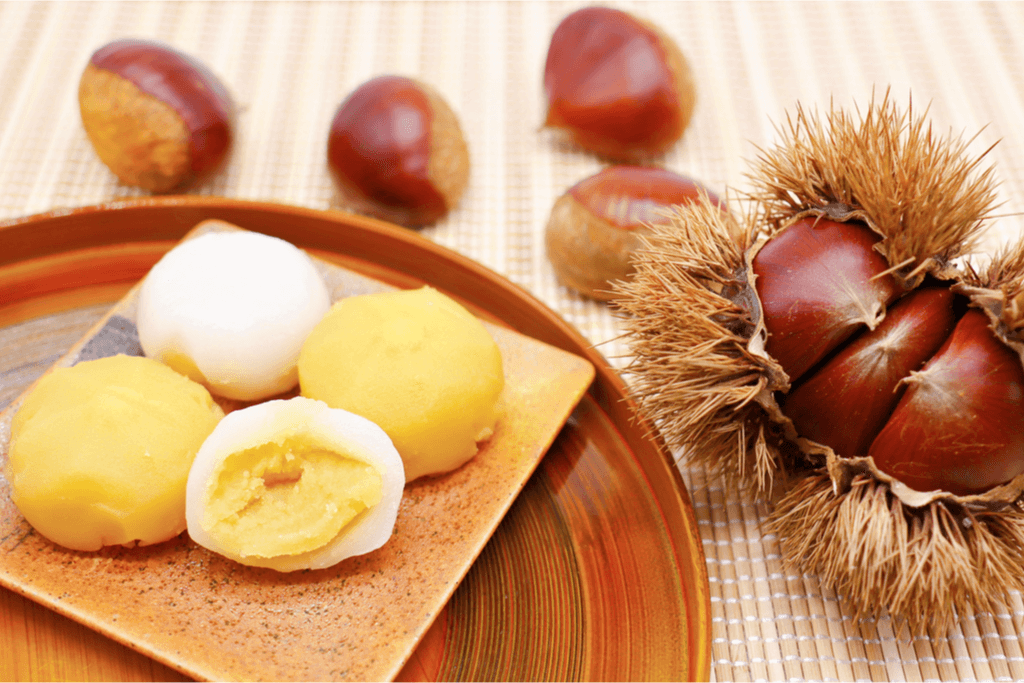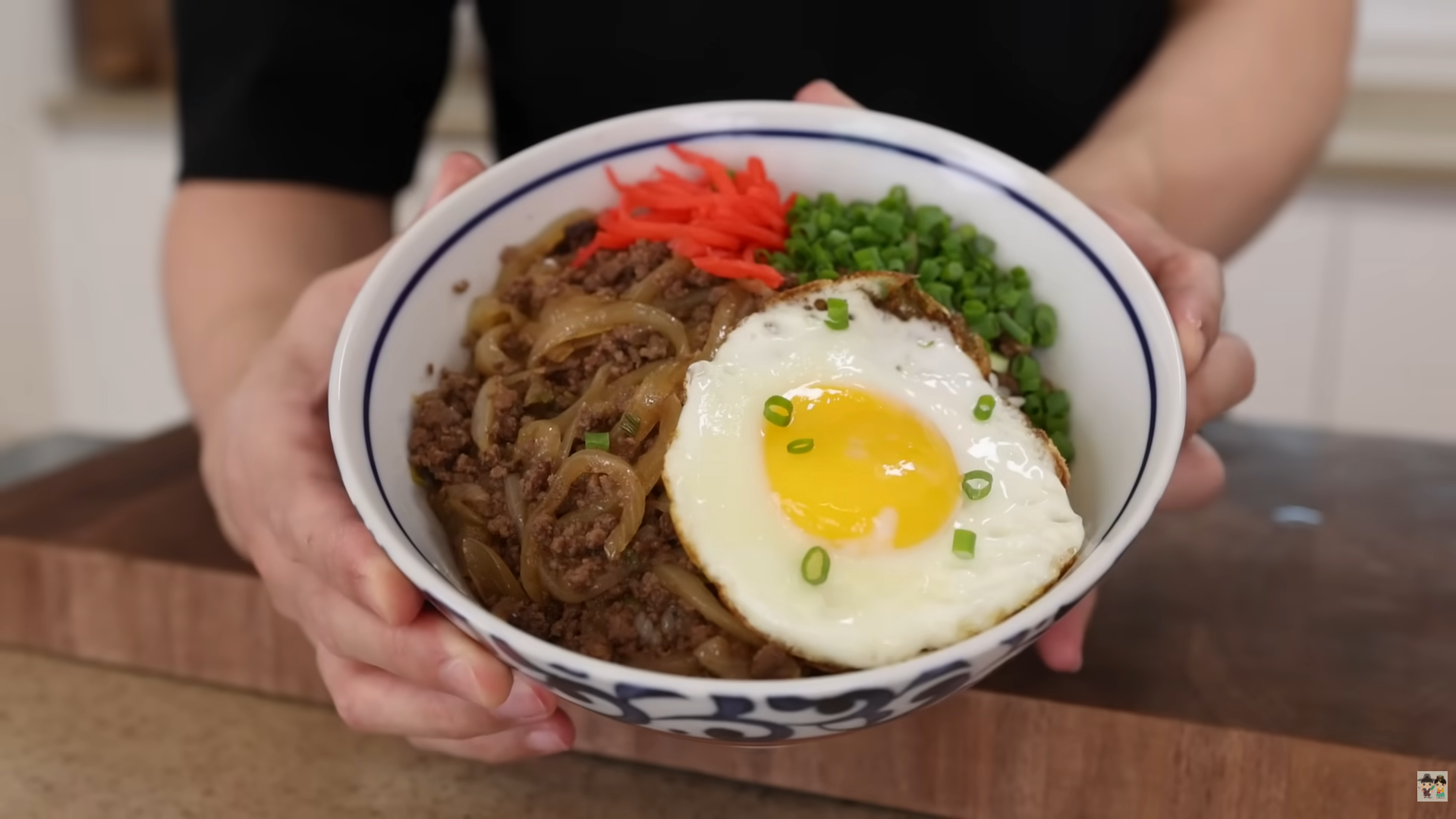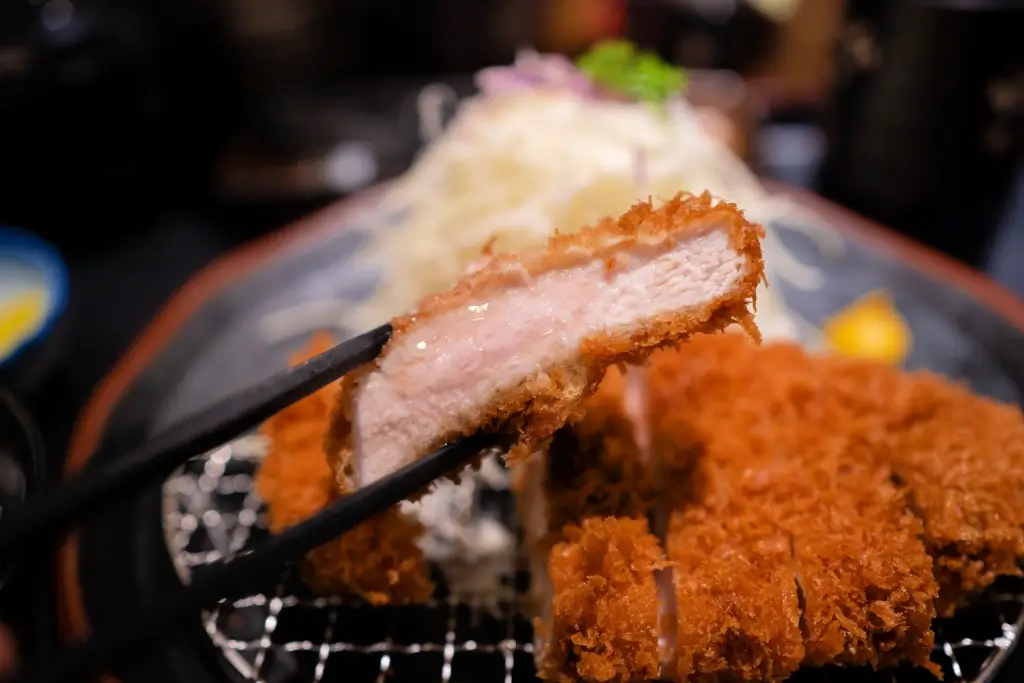autumn, japanese food, Japanese sweets
The Best Traditional Autumn Flavors of Japan

Marissa Ellis
Posted on October 26, 2022
Share:

Warm sweaters, shorter days, and the changing of the leaves are all clear indications that autumn is here. In Japan, as the seasons change, so do the culinary offerings. Autumn presents the perfect time to get a whole variety of limited edition seasonal treats. Settle in for Sakuraco’s top five must-try traditional autumn flavors of Japan.
Sweet Potatoes
The warm, enticing smells of roasted sweet potatoes are sure to beckon you into a supermarket in Japan during the autumn months. Unlike their brown and orange counterparts, Japanese sweet potatoes or satsumaimo, are purple and orange in color. They have a very distinct fluffy, light texture and have a particularly sweet flavor. This makes them the perfect on-the-go snack, and an iconic Japanese seasonal vegetable.
Sweet potatoes have been a long-standing contender for most popular fall food in Japan since their introduction in the 1600s. The root vegetable came to Ryukyu Island (modern day Okinawa) after traveling to the Philippines from China. Sweet potatoes then quickly spread to mainland Japan where they remain eaten to this day.
It is a common sight for children to hear the sweet ice cream truck jingle and run down the streets with coins in hand. In Japan, upon hearing the ever-so-sweet jingle echoing through the streets of their neighborhood, children flock to yakiimo (roasted sweet potato) trucks. These mobile sellers have been around in Japan since the 1600s, almost as long as the sweet potato itself.
Can’t get enough delicious fall flavors like sweet potato, chestnut and apple. Then try Sakuraco! Sakuraco sends authentic Japanese tea, sweets and snacks, right to your door.
Chestnuts
Since prehistoric times in Japan, chestnuts, also known as kuri, have been enjoyed. People as far back as the Jomon Period, also known as Japan’s Neolithic period (14,000–300 BCE), have cultivated chestnuts and used the wood for their homes.
In autumn, it’s common to see Japanese food, sweet and savory, containing chestnuts. Along with the usual offerings of tuna mayo and pickled plum rice balls in convenience stores, you’ll also find chestnut rice balls. It’s a sure-fire indication that fall is here. You can also find chestnut-flavored Kit Kats, Haagan Dazs, and drinks decorating the shelves of local shops.
As expected, chestnuts play an important role in traditional Japanese cuisine too. A small tasty sweet treat that is enjoyed in Japan is the Kuri manju, which is a bun filled with chestnut paste. You will also find chestnuts in yokan, a thick, jellied, red bean paste dessert.
Matsutake Mushroom
Matsutake mushrooms are frequently called the “King of Autumn Foods” because of their rich taste and expensive price tag. These mushrooms are mainly found at the roots of pine trees, and can only be cultivated in their natural habitat exclusively during the autumn season. Because they require these specific conditions to grow, a piece of Matsutake mushroom can sell for as much as $100 USD!
During the autumn season Matsutake dobin mushi, a unique mushroom soup, can be found in local Japanese restaurants. The soup consists of bonito stock, vegetables, chicken or shrimp, and of course, matsutake mushrooms which contribute to its smokey, earthy taste. Unlike Western countries, this sought after mushroom soup is served in a Japanese teapot, called dobin. The soup broth is then carefully poured from the teapot into a traditional Japanese bowl, where the ingredients are picked from the teapot with chopsticks.
Persimmon
From mid-September, the Japanese inaka (countryside) is enriched with persimmon trees sprinkled throughout its landscape. Fresh kaki, or persimmons, are certainly the go-to fruits for Japanese people to eat in autumn. These soft, tomato-like fruits are best eaten raw and have a slight sweet taste of honey.
In the countryside, you’ll often find them being given away in roadside boxes. You’ll also find persimmon peeled and strung up to dry in rows on porches. This is persimmon drying technique is known as hoshigaki. As the persimmon dries, they shrivel and produce a natural sugar coating.
Persimmon health benefits
Persimmons are also one of the healthiest fall foods to consume. They’re naturally high in potassium, similar to bananas. Beyond being a traditional autumn flavors of Japan, persimmons are also high in antioxidants, vitamin A, B, and C, and beta-carotene. This contributes to heart and eye health, as well as reduces the risk of some forms of cancer.
Apples
This list of Japanese seasonal foods would not be complete without apples. An enjoyable weekend activity for families is going to an apple orchard and picking apples together for the day. Throughout Japan over 2,000 varieties of apples are grown, but this hasn’t always been the case. In 1865, the first apple shipment came from the United States. Thus started Japan’s love affair with apples.
Currently, 60% of all apples in Japan come from the northern prefecture Aomori. There, you can find the world-famous Fuji apples. “Fuji” does not refer to Mt. Fuji, but to the town of Fujisaki where the apples originated.
It’s common to see apple juice, jam, pie, wine, and even vinegar available during autumn in Japan.
In Japan fall doesn’t just mean pumpkin pie, it actually marks a season filled with delicious fruits and vegetables. Japanese autumn has a variety of different offerings to suit anyone’s palette throughout the autumn season. Which traditional autumn flavors of Japan would you try? Are there any you’d like to see on the list? Let us know in the comments below.

Discover authentic flavors with Sakuraco
Get Sakuraco 

Discover authentic flavors with Sakuraco
Get Sakuraco 
Related Articles

Aaron and Claire Show Us How to Make Gyudon!
If you’re looking for a Japanese comfort food that’s quick, affordable, and full of flavor, Aaron and Claire have a great option. In this video, Aaron shows how to make Gyudon using ground beef instead of the usual thinly sliced beef.

Tonkatsu Luxury Restaurants: Best Ones to Try!
Don’t miss out on tonkatsu if you’re traveling to Japan! Tourists often add the meal to their must-eat list because of its delicious and satisfying nature. Even better, you can elevate the experience by going to luxury restaurants across Japan, where you can experience some of the most celebrated pork cutlets.

Mochi: How is Mochitsuki Made in Japan?
Mochitsuki is the Japanese tradition of pounding steamed rice to make mochi for the New Year. Families and neighbors gather to participate in this lively and meaningful tradition. The teamwork involved helps everyone feel a sense of connection.

Konpeito Candy: What Makes This Starry Treat Shine?
If you are a fan of the famous Demon Slayer series, then you probably know that the favorite treat of the adorable Nezuko Kamado is those tiny, colorful little sweets.



